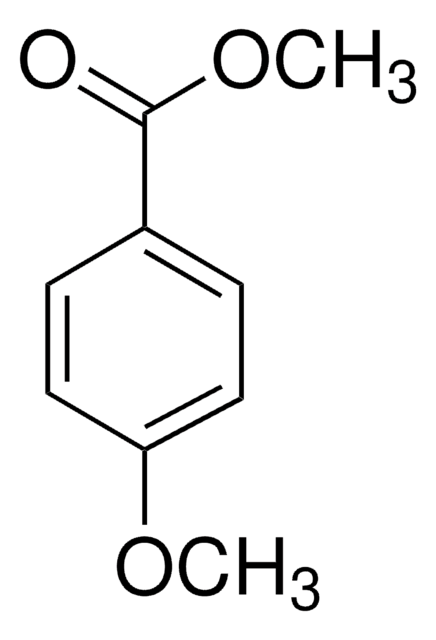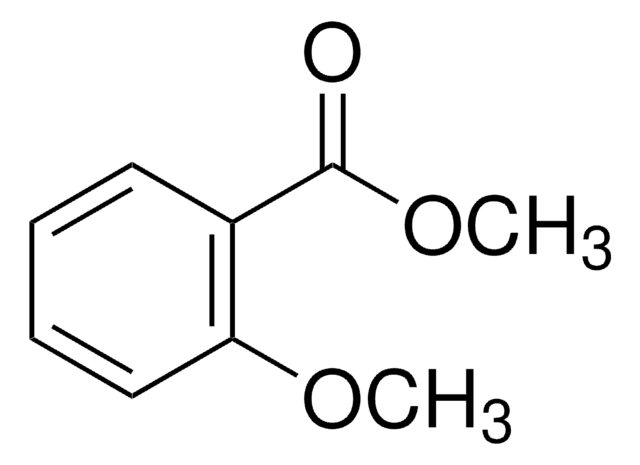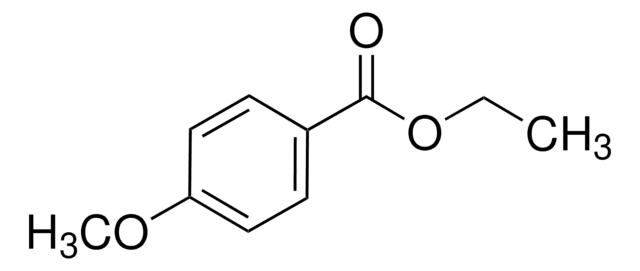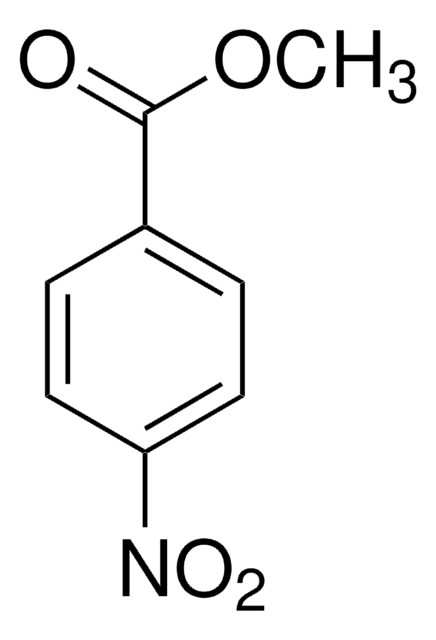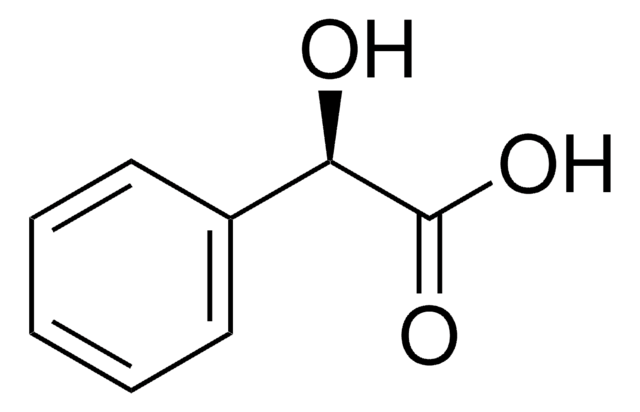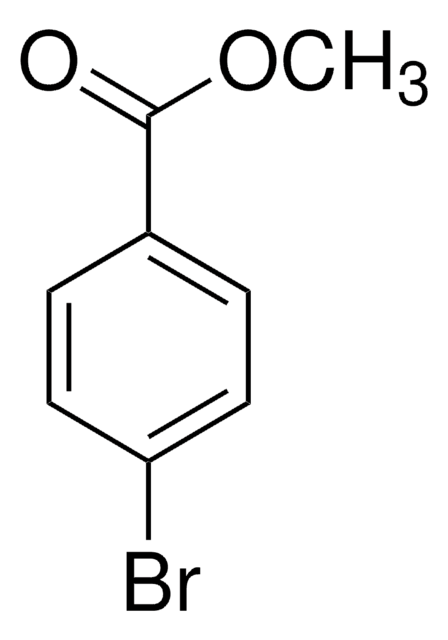253146
Methyl p-anisate
99%
Synonym(s):
p-Anisic acid methyl ester, Methyl 4-methoxybenzoate
Sign Into View Organizational & Contract Pricing
All Photos(2)
About This Item
Linear Formula:
CH3OC6H4CO2CH3
CAS Number:
Molecular Weight:
166.17
Beilstein/REAXYS Number:
2208571
EC Number:
MDL number:
UNSPSC Code:
12352100
PubChem Substance ID:
NACRES:
NA.22
Recommended Products
Quality Level
assay
99%
form
solid
bp
244-245 °C (lit.)
mp
47-51 °C (lit.)
functional group
ester
SMILES string
COC(=O)c1ccc(OC)cc1
InChI
1S/C9H10O3/c1-11-8-5-3-7(4-6-8)9(10)12-2/h3-6H,1-2H3
InChI key
DDIZAANNODHTRB-UHFFFAOYSA-N
Looking for similar products? Visit Product Comparison Guide
Related Categories
General description
Methyl p-anisate is a volatile compound released from Mycobacterium tuberculosis and is detected in the breath of tuberculosis patients. It is a potential biomarker for mycobacteria.
Storage Class
11 - Combustible Solids
wgk_germany
WGK 2
flash_point_f
233.6 °F - closed cup
flash_point_c
112 °C - closed cup
ppe
Eyeshields, Gloves, type N95 (US)
Choose from one of the most recent versions:
Already Own This Product?
Find documentation for the products that you have recently purchased in the Document Library.
Customers Also Viewed
Amy Scott-Thomas et al.
Journal of breath research, 7(3), 037108-037108 (2013-07-23)
Mycobacterium tuberculosis releases four volatile compounds, methyl phenyl-acetate, methyl nicotinate, methyl p-anisate and o-phenylanisole, some of which we have previously been reported to be detected in the breath of tuberculosis patients (Syhre et al 2009 Tuberculosis 89 263-6). These volatiles have
Ronald P Manginell et al.
Journal of breath research, 7(3), 037107-037107 (2013-07-23)
Pathogenic Mycobacteria cause diseases in animals and humans with significant economic and societal consequences. Current methods for Mycobacterial detection relies upon time- and labor-intensive techniques such as culturing or DNA analysis. Using gas chromatography and mass spectrometry, four volatile compounds
Fabrizio Carta et al.
Bioorganic & medicinal chemistry letters, 21(8), 2521-2526 (2011-03-16)
The inhibition of the β-carbonic anhydrases (CAs, EC 4.2.1.1) from the pathogenic fungi Cryptococcus neoformans (Can2) and Candida albicans (Nce103) with a series of 25 branched aliphatic and aromatic carboxylates has been investigated. Human isoforms hCA I and II were
Global Trade Item Number
| SKU | GTIN |
|---|---|
| 253146-25G | 4061831819328 |
| 253146-100G | 4061831819311 |
Our team of scientists has experience in all areas of research including Life Science, Material Science, Chemical Synthesis, Chromatography, Analytical and many others.
Contact Technical Service
